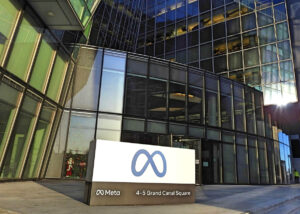ChatGPT turns one, the financial price employees put on remote work
Plus, how to better support mental wellbeing on the job.

Greetings comms pros! Let’s take a look at a few news stories from the past week and see what we can learn from them.
1 . A look at ChatGPT’s impact after one year
It’s hard to believe, but ChatGPT has been a part of our lives for a year now. The tool kicked off a revolution in generative AI, leading communicators to speculate on the myriad ways this new tech will affect how the industry functions. While nothing’s set in stone, the past 12 months have allowed comms pros to grapple with the big questions and work to navigate a way forward.
While there are certainly organizations that have benefited greatly in the AI revolution, the biggest seems to be ChatGPT.
Make no mistake, though: ChatGPT is the biggest winner of the ChatGPT revolution. It doesn’t look like much — its new audio and image features are neat, but it’s mostly still just a roughly designed chat interface — and it has been plagued by reliability issues, but that didn’t stop its momentum. It had a million users in five days, 100 million after just two months, and now boasts of having 100 million every week.
It’s pretty evident that with that sort of adoption, AI isn’t going away for the foreseeable future. That’s why comms pros need to look past the apprehension that a new tech might create and try to view it as a tool to help with on-the-job tasks. If AI can help comms pros be more creative and innovative within their roles, isn’t that a good thing? We’ll see if the conversation changes by the time ChatGPT turns two, but an attitude of optimistic acceptance will help communicators transition into the age of AI.
2. Research shows that remote work would save employees nearly $5k annually
One of the most prominent arguments that proponents of remote work present is that it can save time and money that used to be lost to commuting. Now, there’s Bureau of Labor Statistics data to back that up, stating that the average commuter can save about $4,600 a year (on a salary of $58,000).
A recent report from Owl Labs found that hybrid workers spend about $31 a day more than they would if they were working a hybrid schedule. The difference could add up to almost $1,000 a month or $12,000 year — plenty more than the $4,600 our median earner would relinquish in exchange for a remote or hybrid arrangement.
Plus, remote employees with young children or pets might not have to worry about the extra costs of care, which can amount to thousands of dollars each year as well.
There are plenty of good arguments behind bringing people into the office, including an increased sense of cohesion and culture. But when you roll out return-to-office programs, it’s wise to consider the financial or other stresses employees might be under when they’re thinking about their work situation.
Workplace arrangements are rarely black and white. Properly training managers to have conversations about these nuances and keeping an open dialogue with employees about work situation issues can help keep a culture positive and employees motivated and heard. Keep that in mind when you’re coming up with your messaging around them.
3. How to take material steps for mental wellbeing at work
If you’re feeling your best outside the office, you’re more likely to perform better inside it. But according to the 2023 Mental Health Work Report by Mind Share Partners, just 38% of employees said their organizations prioritized mental health as part of their wellness plan. Frankly, in a world of frequent burnout, that’s just not good enough.
So, what can communicators do to bridge the gap?
It’s said until we’re blue in the face in the comms world, but it all begins with listening. That doesn’t mean just putting out a survey and doing nothing — it means actively asking about the sources of stress that employees face and collaborating with your HR colleagues to provide outlets and pathways for better wellbeing at work.
Workers aren’t machines — they don’t just turn off their brains and forget about their issues and stress points when it’s closing time. Partnering across functions to ensure your organization implements wellness offerings that get to the heart of the issues at hand, which can be learned about through active listening, is a great start to making a material change.
4. How about some good news?
- The world’s first electric “flying” passenger ship was unveiled.
- A cache of 2,000-year-old coins were uncovered in Japan.
- NYCFC’s new soccer stadium is set to be the first fully-electric venue in MLS.
- Ragan Training is great for communications pros to find inspiration and resources.
- You should be rewarded for your work. Find out how to earn an award here!
Have a great weekend comms all-stars!
Sean Devlin is an editor at Ragan Communications. In his spare time he enjoys Philly sports, a good pint and ’90s trivia night.







